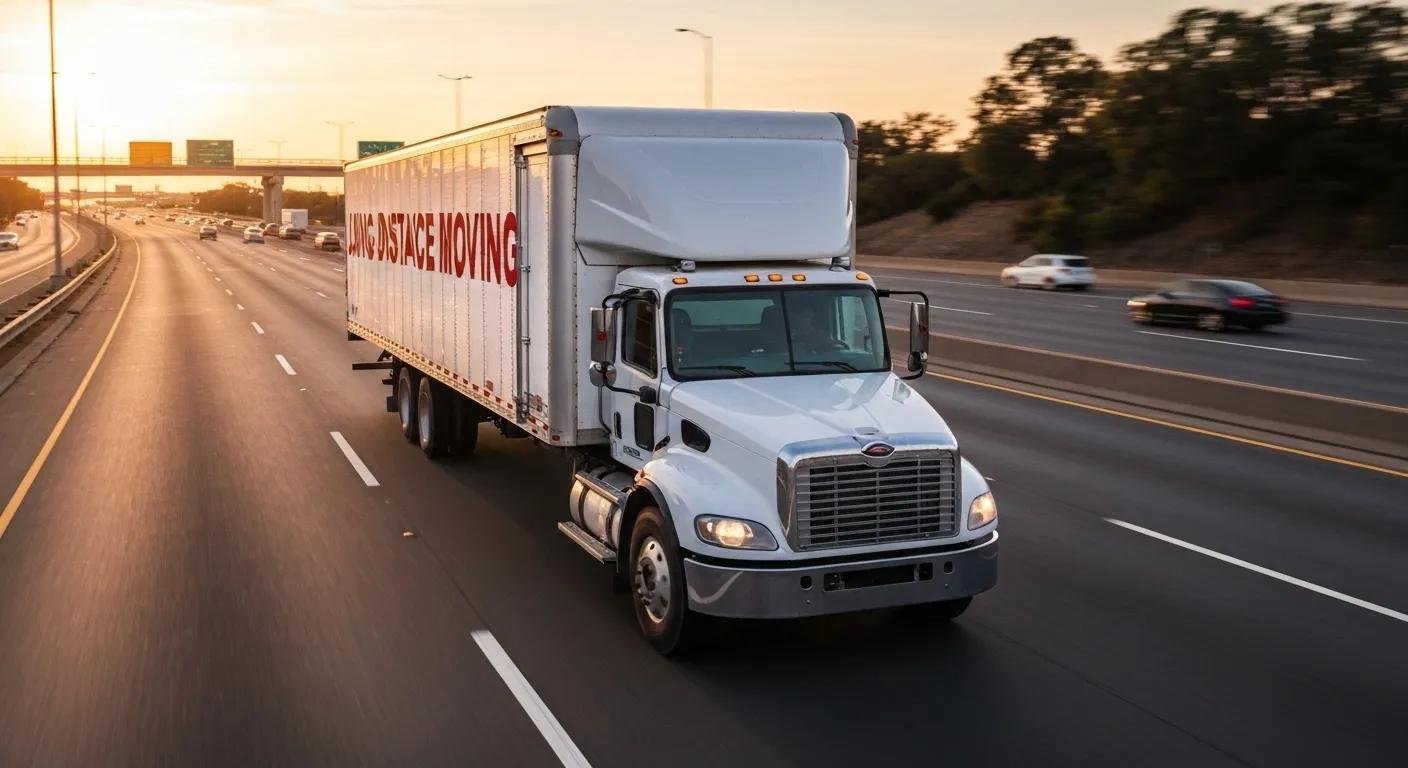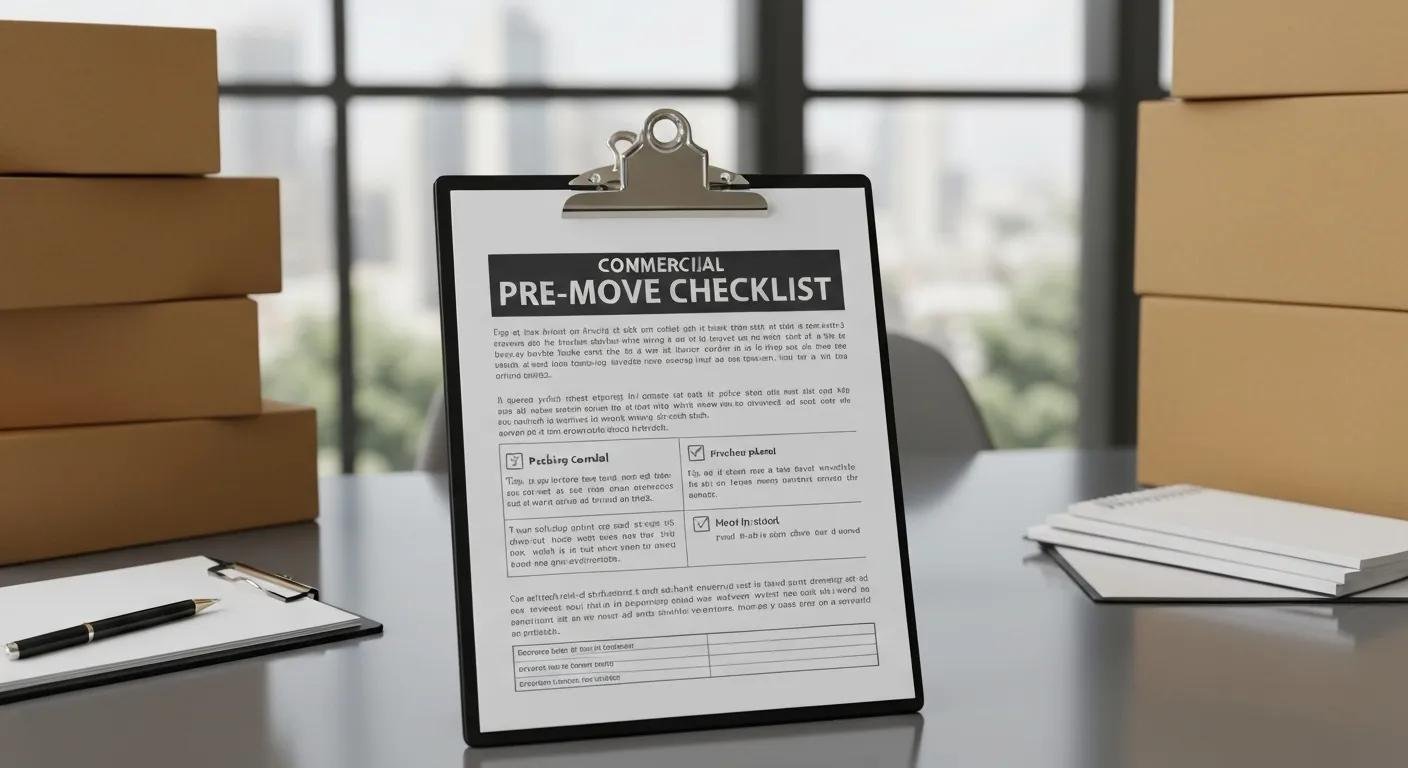Commercial Moving Company Comparison Guide for Businesses

Best Commercial Moving Company Comparison Guide for Businesses: How to Choose, Compare, and Save
Selecting the right commercial moving company can reduce relocation downtime by up to 40%, protect critical assets, and deliver measurable cost savings. In this guide, businesses gain a clear comparison of top providers in 2025, learn decision-making criteria, review typical pricing models, follow an actionable relocation checklist, and explore emerging industry trends. By mapping service offerings, pricing, reputation factors, and sustainability initiatives, this comparison guide equips organizations to choose, compare, and save on their next office move.
Minimizing Downtime: The Impact Of Expert Business Moving Services
Professional commercial moving services are crucial for minimizing business downtime during relocation. Expert movers provide strategic planning, efficient packing, and safe transportation of equipment, allowing businesses to resume operations faster and avoid disruptions.
This information reinforces the article’s assertion that selecting the right commercial moving company can significantly reduce relocation downtime and ensure business continuity.
What Are the Top Commercial Moving Companies for Businesses in 2025?
The top commercial moving companies in 2025 deliver specialized logistics, coordinated project management, and consistently high customer satisfaction scores to streamline business relocations and minimize operational interruption.
These comparisons highlight providers with distinct strengths, setting the stage for deeper exploration of long-distance, local, and niche services.
Which Companies Offer the Best Long-Distance Commercial Moving Services?

Long-distance movers coordinate interstate logistics and secure freight transport to ensure timely delivery and asset protection for relocations beyond 250 miles.
- American Van Lines manages cross-country fleets with GPS-enabled tracking. (move.org)
- North American Van Lines provides white-glove handling and door-to-door transit. (move.org)
- Allied Van Lines offers binding estimates that lock in cost for budget certainty. (move.org)
These leaders sustain high reliability by leveraging real-time shipment monitoring, reducing transit damage, and preserving schedule accuracy.
Who Are the Leading Local Office Moving Companies?
Local office movers specialize in city-wide and regional relocations, optimizing labor crews, traffic planning, and building regulations to complete moves within 100 miles efficiently. For example, Boston Moving Services – Local and Long Distance Movers excels at minimizing downtime for Boston-area enterprises by integrating route planning with professional packing and setup.
Local specialists reduce risk through intimate knowledge of municipal requirements, providing businesses with rapid turnaround and consistent service quality.
What Specialized Services Do Commercial Movers Provide for IT and Specialty Equipment?
Specialty movers handle sensitive technology, manufacturing instruments, and high-value fixtures through custom packaging, climate-controlled transport, and certified technicians. Typical offerings include:
- Server rack disassembly and reassembly using anti-static protocols.
- Laboratory and medical device crating with vibration-dampening materials.
- Secure vehicle transport and oversized machinery relocation.
These services protect critical infrastructure, maintain warranty compliance, and support immediate productivity after installation.
How Do Commercial Moving Companies Compare on Pricing and Customer Ratings?
Commercial moving costs vary by distance, shipment volume, service complexity, and route logistics, while customer ratings reflect responsiveness, claim resolution, and transparency. The table above synthesizes average ratings alongside core specialties to guide businesses toward providers whose reputations and pricing structures align with project demands.
How Do You Choose the Right Commercial Moving Company for Your Business?
Selecting a mover involves evaluating credentials, track record, and alignment with organizational requirements to ensure asset protection and schedule adherence.
What Key Factors Should Businesses Consider When Comparing Commercial Movers?
When comparing movers, businesses should assess experience, licensing, and service scope to guarantee regulatory compliance and operational efficiency.
- Verify FMCSA registration and cargo insurance levels.
- Confirm specialized experience in office, laboratory, or IT relocations.
- Evaluate in-house packing, storage capabilities, and white-glove options.
These factors reduce liability, safeguard equipment, and streamline communication throughout the relocation process.
How Important Are Customer Reviews and Company Reputation?
Customer feedback and industry certifications signal reliability, service consistency, and problem-resolution effectiveness, offering real-world insights into a mover’s performance.
- Aggregate star ratings across platforms like BBB and Google Reviews.
- Review documented case studies for similar project scales and industries.
- Seek testimonials highlighting claim handling, schedule adherence, and post-move support.
Reputation analysis helps predict service quality and informs risk-mitigation strategies.
What Questions Should You Ask Commercial Moving Companies Before Hiring?
A targeted questionnaire uncovers hidden fees, clarifies responsibilities, and sets performance expectations to avoid disputes and budget overruns.
- “Is my estimate binding or non-binding?”
- “What is your claims process for damages?”
- “Can you provide references from similar projects?”
- “What are your standard packing materials and procedures?”
Answering these questions ensures transparency, aligns deliverables, and informs final contract terms.
How Does Technology and Sustainability Impact Commercial Moving Choices?
Technology integration and eco-friendly practices differentiate providers through operational transparency and reduced environmental impact.
- Real-time GPS tracking and digital inventory management improve accountability.
- Electric or hybrid fleets lower carbon footprints and comply with green initiatives.
How Technology is Transforming the Moving Industry: Innovations Reshaping Relocation
Technology, including AI-powered route optimization, GPS tracking, and digital inventory management, is revolutionizing the moving industry by enhancing operational efficiency and customer experience. Concurrently, sustainable practices like using eco-friendly packing materials, energy-efficient vehicles, and carbon-offset programs are increasingly adopted by movers to reduce environmental impact.
This supports the article’s discussion on how technology integration and eco-friendly practices are differentiating commercial moving providers and shaping industry choices.
Choosing movers with advanced logistics platforms and sustainable vehicle options supports corporate responsibility goals and enhances project visibility.
What Are the Typical Costs and Pricing Models for Commercial Moving Services?
Commercial moving costs derive from labor hours, equipment use, mileage, and value-added services, with pricing models designed to match project complexity and risk preferences.
How Are Commercial Moving Costs Calculated and What Affects Pricing?
Costs are calculated by combining distance-based transportation fees, hourly labor rates, and additional service charges to produce binding or non-binding estimates.
- Distance and weight determine baseline transportation rates.
- Labor hours reflect packing, loading, unloading, and setup efforts.
- Specialty services (IT handling, crating) add flat or per-unit fees.
Understanding these components empowers businesses to forecast budgets accurately.
How Can Businesses Get Accurate Commercial Moving Quotes?
Obtaining precise quotes requires detailed on-site surveys, accurate inventory lists, and clarity on project timelines.
- Schedule a comprehensive site visit to assess access, floor plans, and special requirements.
- Provide an itemized inventory of assets, including fragile or oversized items.
- Confirm expected move dates, staging areas, and storage needs.
Thorough preparation minimizes surcharges and ensures binding estimates reflect true project scope.
What Hidden Fees Should Businesses Watch Out For in Commercial Moves?
Hidden fees can erode budgets if not addressed upfront, introducing unexpected costs after contracts are signed.
- Stair carry or elevator reservation charges.
- After-hours or weekend labor premiums.
- Storage access fees and extended warehousing costs.
Identifying these potential surcharges during proposal review safeguards against post-move invoice surprises.
What Is a Commercial Moving Checklist for Businesses?

An actionable relocation checklist structures planning, execution, and follow-up activities to maintain continuity and reduce downtime.
What Are the Essential Pre-Move Planning Steps?
Effective pre-move preparation aligns stakeholders, secures resources, and establishes clear timelines to reduce operational disruptions.
- Assign a relocation coordinator to manage tasks and communication.
- Inventory and label all assets, categorizing by department and priority.
- Schedule packing, IT shutdown, and network disconnection windows.
- Confirm building access, permissions, and parking reservations.
Structured planning minimizes surprises and ensures a controlled transition.
How Should Businesses Manage the Moving Day Process?
Coordinated execution on moving day ensures teams stay on schedule, assets remain protected, and critical systems come online promptly.
- Maintain an on-site command center for real-time issue resolution.
- Use digital checklists to verify completed tasks and asset delivery.
- Communicate status updates to department leads at each milestone.
This disciplined approach preserves productivity and accelerates operational resumption.
What Post-Move Actions Ensure a Smooth Business Relocation?
Post-move follow-up addresses final installations, damage assessments, and stakeholder feedback to close out the project and validate success.
- Conduct a walkthrough to identify missing or damaged items.
- Confirm IT infrastructure functionality and network connectivity.
- Gather team feedback and document lessons learned for future moves.
These steps solidify completion, maintain accountability, and inform continuous improvement.
What Industry Trends Are Shaping Commercial Moving Services in 2025?
Emerging market dynamics elevate customer expectations for transparency, sustainability, and technological innovation in commercial relocations.
How Is Technology Transforming Business Relocation Services?
Advanced logistics platforms, artificial intelligence routing, and digital inventory tools optimize scheduling, reduce delays, and deliver real-time visibility.
- AI algorithms predict optimal moving windows and resource allocation.
- Mobile apps enable clients to track shipment status and approve digital invoices.
These innovations improve accuracy, strengthen trust, and accelerate decision-making.
What Sustainable Practices Are Commercial Movers Adopting?
Commercial movers increasingly uphold green standards by integrating recyclable materials, energy-efficient vehicles, and carbon-offset programs.
- Reusable plastic crates replace single-use cardboard.
- Hybrid and electric trucks lower emissions and operating costs.
Adopting these practices aligns relocation projects with corporate sustainability goals and regulatory requirements.
How Is the Commercial Moving Market Growing and What Does It Mean for Businesses?
The commercial relocation industry is projected to expand at a 7 percent CAGR through 2032, driven by corporate office turnover, remote work realignments, and global supply-chain shifts. This growth intensifies competition, encourages service specialization, and presents businesses with a broader array of tailored logistics solutions. Continuous market expansion ensures innovative offerings but also demands more rigorous due diligence when selecting a moving partner.
Commercial Moving Trends: What the Latest Data Says
The corporate relocation service market is projected to grow from $20.22 billion in 2025 to $32.47 billion by 2032, exhibiting a compound annual growth rate (CAGR) of 7%. This expansion is driven by factors such as global talent mobility and strategic business expansion initiatives.
This research directly supports the article’s claim regarding the projected growth rate of the commercial relocation industry.
Continuous market expansion ensures innovative offerings but also demands more rigorous due diligence when selecting a moving partner.


